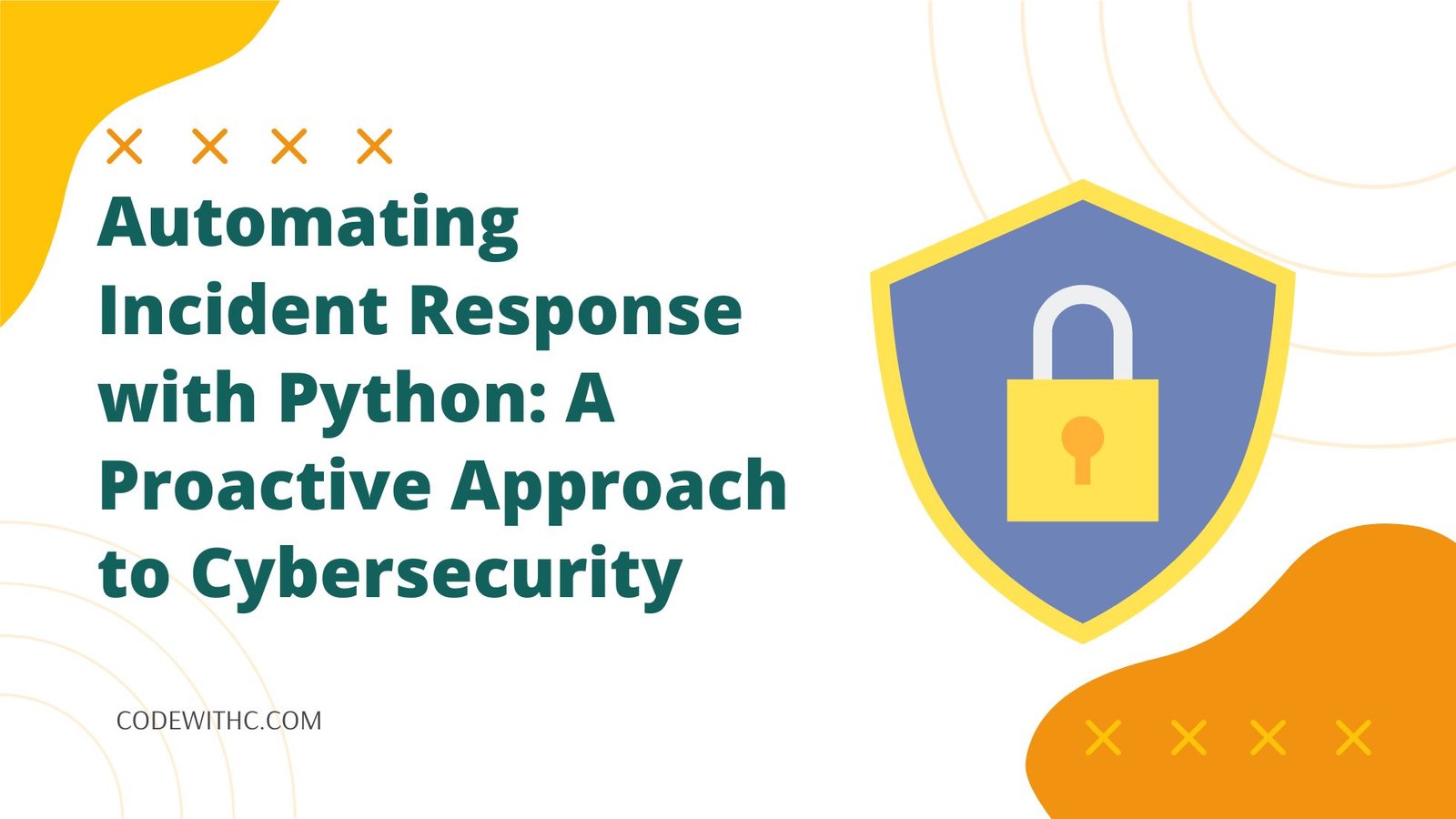Automating Incident Response with Python: A New Dawn in Cybersecurity
Imagine a world where cybersecurity isn’t just about reacting but about anticipating. A realm where incident responses aren’t manual but automated, not just efficient but predictive. Sounds like the stuff of sci-fi novels, right? But here’s the kicker: we’re already stepping into this new dawn, and Python is lighting the way.
Setting the Stage
The Cybersecurity Landscape: A Dynamic Battlefield
Let’s get real for a moment. Cybersecurity is like a high-stakes, fast-paced chess game where the board constantly changes. New technologies sprout up like weeds, and with them, fresh vulnerabilities. In such a dynamic landscape, the old ways of handling security incidents—manual interventions, endless alert notifications, and cumbersome protocols—just won’t cut it anymore.
The Incident Response Quagmire
Incident response, often the last line of defense, has traditionally been a reactive discipline. A breach occurs, alarms blare, and the IT team scrambles to contain the damage. This reactive model has a crucial flaw: it operates on borrowed time. Every second spent identifying the breach, assessing the impact, and implementing countermeasures is a moment where the attacker can deepen their intrusion, exfiltrate data, or worse.
Why Automation? Why Now?
The Time Factor
Incident response is a race against time. The quicker you can detect, analyze, and neutralize a threat, the better. Automation, by its very nature, speeds up these processes, turning what could be minutes (or even hours) of manual work into a matter of seconds.
Complexity and Scale
We’re no longer talking about isolated systems or small-scale networks. Modern enterprises operate on a global scale, with intricate, multi-layered architectures. Manually monitoring such expansive digital ecosystems is not just challenging; it’s virtually impossible. Automation helps us manage this complexity, bringing scalability to our defense mechanisms.
Python: The Vanguard of Automated Incident Response
Simplicity Meets Power
Python’s beauty lies in its balance between simplicity and power. Its straightforward syntax and readability make it accessible for cybersecurity professionals and developers alike. Yet, beneath this simplicity lies a powerhouse capable of driving complex algorithms, data analytics, and yes, automating incident response.
An Ecosystem Built for Cybersecurity
Python isn’t a lone wolf; it’s part of a broader ecosystem. Its extensive libraries and frameworks, many designed specifically for cybersecurity, make it a formidable tool for automating various facets of incident response.
The Importance of Incident Response
When Seconds Count
In the world of cybersecurity, time is of the essence. Every second that passes during a security incident could mean more data compromised and increased potential damage. Here, the value of a well-executed incident response cannot be overstated.
The Reactive vs. Proactive Dilemma
Traditionally, incident response has been a reactive process. You wait for an incident to occur, and then you respond. But what if you could be proactive instead? What if you could spot a potential incident and neutralize it before it escalates?
Python: The Automation Maestro
Why Python for Automation?
Python’s power lies in its simplicity and versatility, making it ideal for automating complex tasks. Its wide range of libraries like os, sys, and subprocess makes it a robust choice for automating incident responses.
Sample Code: Auto-locking a Compromised System
import os
def detect_unauthorized_access():
with open('security_log.txt', 'r') as f:
for line in f:
if 'unauthorized access' in line:
os.system('lock_system_command') # Replace with actual system lock command
Code Explanation
This code snippet reads a security log file and looks for the phrase “unauthorized access.” If found, it auto-locks the system to prevent further compromise.
Expected Output
System Locked Due to Unauthorized Access
Integrating AI for Predictive Analysis
Beyond Just Rules
Incident response isn’t just about following a set of rules. By integrating Python with machine learning algorithms, you can develop predictive models that can foresee potential incidents based on past behavior and data patterns.
Wrapping Up: The Next Frontier in Cybersecurity
As we navigate through the choppy waters of the digital world, automating incident response using Python stands as a beacon of innovation and efficiency. It’s not just about responding to incidents; it’s about foreseeing them, understanding them, and proactively neutralizing them.
Automating incident response is more than a trend; it’s the next frontier in cybersecurity. Python, with its ease of use and powerful capabilities, is leading this revolution. So, are you ready to join this thrilling ride? Buckle up, because it’s going to be an exciting journey! ?
